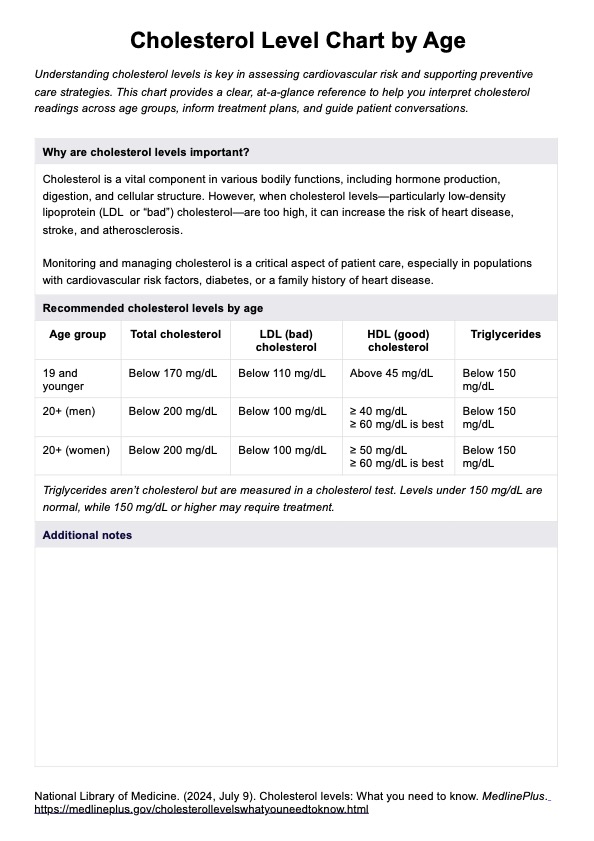For anyone 19 or younger, healthy total cholesterol is less than 170 mg/dL. For adults 20 or older, both men and women should aim for total cholesterol levels below 200 mg/dL.

Cholesterol Level Chart by Age
Get Carepaton's free Cholesterol Level Chart by Age to support patient monitoring with age-based guidelines for effective clinical use.
Cholesterol Level Chart by Age Template
Commonly asked questions
For men 20 or older, a healthy HDL is 60 mg/dL or higher, and LDL should be less than 100 mg/dL. For women, HDL should also be 60 mg/dL or higher and LDL less than 100 mg/dL; levels lower than 40 mg/dL for men and 50 mg/dL for women are considered low.
High cholesterol typically doesn’t show symptoms, but warning signs can include chest pain, heart attack, stroke, pain while walking, and yellowish deposits around the eyes (xanthomas). Regular blood tests are the best way to detect it.
EHR and practice management software
Get started for free
*No credit card required
Free
$0/usd
Unlimited clients
Telehealth
1GB of storage
Client portal text
Automated billing and online payments











